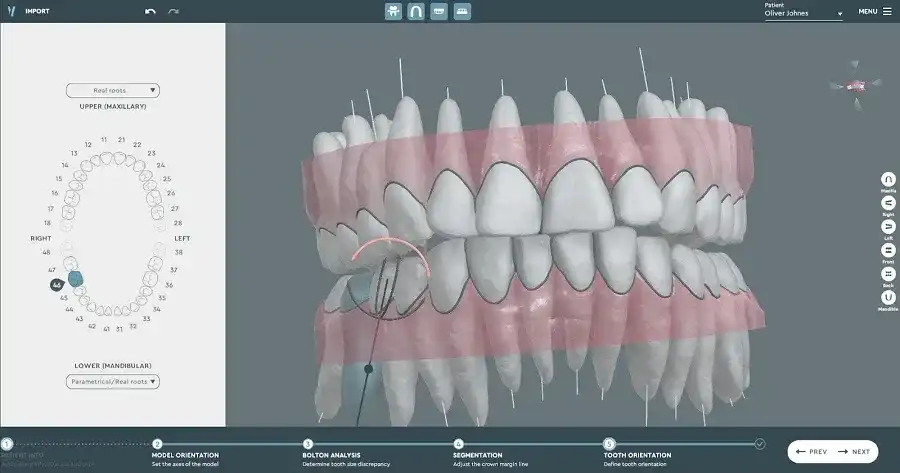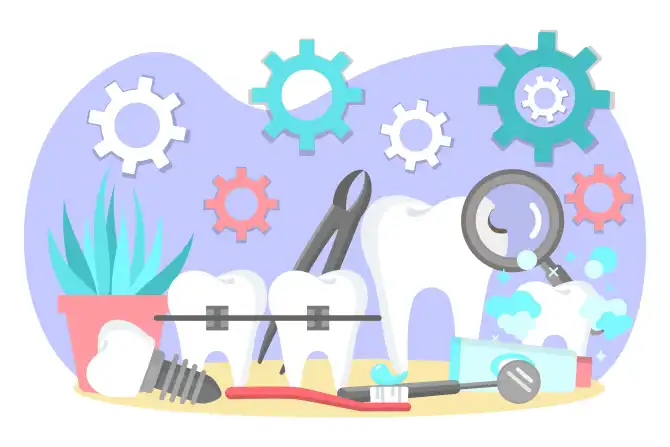
CBCT & VISION by SoftSmile: Advanced Analysis in Orthodontic Treatment Planning
by SoftSmile Team in Jul 31 2023
SoftSmile has spent years developing the Cone Beam Computed Tomography (CBCT) capabilities of VISION, its treatment planning software. An updated version of VISION with full CBCT integration will be launched soon. The ability to manipulate complex data from CBCT scans will unlock new levels of analysis and diagnosis and improve treatment planning design and outcomes.
What is CBCT?
CBCT is a special type of X-ray machine used when a traditional dental X-ray is not sufficient. It is also used as a diagnostic imaging tool to find the pathology of oral and maxillofacial (jaw and face) structures.
CBCT uses a unique kind of technology to generate three-dimensional (3D) images of dental structures, soft tissues, nerve paths, and bone in the craniofacial region in a single scan. The shift to 3D CBCT imaging is a major development in the field, transforming the way orthodontists approach patient evaluation and treatment planning.
Why and how did SoftSmile build this feature?
SoftSmile has leveraged years of expertise working with CBCT scan images of jaws and bone to build this feature. We’ve incorporated CBCT into our VISION platform because we recognize that this superior imaging technology represents a revolutionary innovation in orthodontics. We have focused on automating CBCT analysis using advanced AI features to ensure users can confidently visualize and manipulate the 3D imaging data. We understand the need for a tool that not only aids in diagnosis but also improves the efficiency of treatment planning and patient communication. By integrating CBCT technology into VISION, we offer users a robust, high-quality, and advanced tool to address these needs.
How does CBCT enhance analysis in treatment planning?
CBCT enhances analysis in treatment planning because it provides three-dimensional imaging, which vastly improves the amount and quality of information compared to traditional two-dimensional methods like X-rays. This facilitates a deeper understanding of each patient's unique anatomical structures, leading to more accurate diagnoses and more effective, personalized treatment plans.
In what ways does VISION specifically improve CBCT analysis and diagnosis?
VISION by SoftSmile improves CBCT analysis and diagnosis via:
- Customization: The visualization and analysis possible with VISION allows for highly tailored treatment plans based on an individual's specific anatomical features, extracted from CBCT images.
- Advanced visualization: The interactive visualization techniques used by VISION provide a more in-depth understanding of the patient's oral structures. Doctors can better demonstrate treatment plans and progress to patients with this advanced visualization capability. Users can zoom and change the view angle to manipulate the data from CBCT scans.
- Accuracy: VISION accurately considers the direction of the tooth axis, which is crucial for the Tuning Table and future occlusion keys.
- Collision and Boundary Control: The system ensures the safety and effectiveness of treatments by monitoring for potential collisions of roots and controlling roots going beyond bone limits.
How does the AI in VISION's automated CBCT analysis work? What are its benefits?
The AI in VISION's automated CBCT analysis is based on neural networks, specifically designed to handle CBCT scan segmentation. A neural network is a system of algorithms modeled after the human brain, which is designed to recognize patterns. Building this AI feature involved training the neural network on a large dataset of CBCT scans. During this process, the network learned to identify and segment various structures in the scans based on the examples it was given. Over time, it became capable of performing this task accurately and efficiently, even on new, unseen data.
The benefits of using neural networks in VISION's CBCT analysis include:
- Efficiency: Neural networks can process large amounts of data quickly and accurately.
- Learning capability: They learn from the data they are given, improving their performance over time and reducing the need for manual input and adjustments.
- Precision: They can pick up on complex patterns and details that might be missed by conventional algorithms, leading to more accurate segmentation and analysis.
What differentiates VISION's CBCT integration?
VISION’s CBCT integration offers advanced visualization and manipulation of 3D CBCT scans, personalized treatment planning, as well as smart collision and boundary control capabilities. However, what sets it apart is the use of AI, specifically neural networks, for CBCT scan segmentation. These features provide orthodontists with a highly reliable tool for diagnosis and treatment planning made possible by more efficient and accurate analysis compared to systems that rely on conventional algorithms.
To learn more about VISION and its CBCT capabilities schedule a demonstration here.



